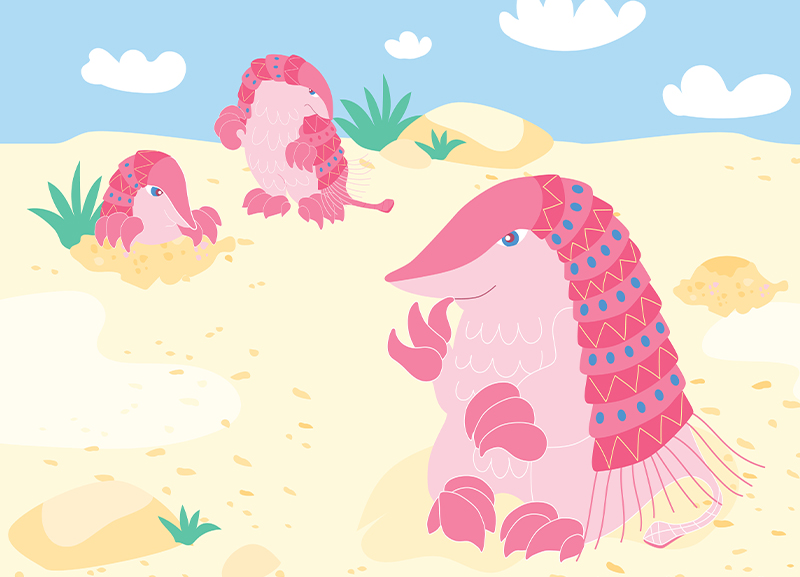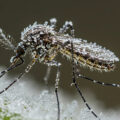
It’s the smallest armadillo species in the world, and arguably the cutest. About the size of a Rupee note, it’s a nocturnal creature from central Argentina. They are born 5 inches long and it average size is up to approximately 6 inches. It isn’t actually a fairy, but it may be just as hard to study. It spends most of its life underground, and sightings in the wild are so rare that one armadillo researcher worked in its habitat for 13 years without ever coming across one. As a result, scientists know little about its population size or trends.
Yes, I’m talking about the Pink Fairy Armadillo.
You probably haven’t heard of them, as they are an endangered species from the continent of South America. Hidden away in the deserts of Argentina, these species are small and have a shell of pink, giving them a contrast to their cousins with hard shells and dull shades of brown.
This thin, flexible shell isn’t primarily for protection, but for temperature regulation. It contains blood vessels that empty or fill to control the animal’s body temperature—and give it its rosy hue.
Pink fairy armadillos have small eyes, silky yellowish white fur, and flexible dorsal shells that are attached to their bodies by thin dorsal membranes. Their spatula-shaped tails protrude from vertical plates at the blunt rear of their shells. They exhibit nocturnal and solitary habits and feed themselves largely on insects, worms, snails, and various plant parts. The pink fairy armadillo has a unique ability to bury itself in a matter of seconds, using its specialized claws to dig into sandy or loamy soils. This behavior helps protect the armadillo from predators and extreme temperatures, as well as conserve moisture in its arid habitat.
Living in the hot desert requires some serious skill, but these armadillos don’t disappoint. But don’t be fooled by its cute and delicate appearance. The pink fairy armadillo is a champion digger. With its oversized front claws, the pink fairy armadillo can dig quickly and disappear with a blink of an eye.
The digging technique of the pink fairy armadillo is pure art. They have these massive front claws that can dig into any substance in the desert which can work better than any shove, and they can tunnel through sand faster than any animal can. They are also nicknamed the “sand swimmer” because it can dig through soil super fast, almost like swimming.
Baby pink fairy armadillos are born 12cm tall, with their shells not being properly developed, making it look like a tiny pink purse. The first few weeks of their lives are spent learning the basics. Like, learning how to dig, how to find good stuff buried in the ground, and most importantly, how to avoid predators. After two months, these armadillos’ shells harden up, tuning into armor for protection, and then they start getting used to the lifestyle of digging around.
These tiny species are omnivores, they mainly eat ants, larvae, worms, and other tiny insects it digs out of the soil. It also nibbles on roots and plants when insects are hard to find. Thanks to its strong claws and sensitive nose, this little armadillo is great at sniffing out food underground, even at night.
Pink fairy armadillos are highly vulnerable to environmental changes, making them one of the most delicate species on Earth. They are severely threatened by habitat loss, farmland pesticide usage, overhunting, and the illegal demand for exotic pets. Due to their low metabolism and inability to store fat, even slight drop in temperature can be fatal, especially since they are native to temperate and warm regions. In addition, domestic predators such as cats and dogs pose another danger to their survival.
Because of these factors, pink fairy armadillos have been classified as endangered and placed on the Endangered Species list since 1970. Protecting their habitats, regulating pesticide use, and discouraging their capture for the pet trade are essential steps to ensure their survival. Safeguarding these rare and fascinating creatures is not only about saving a species but also about preserving the fragile balance of the ecosystems they inhabit.
October, 2025































